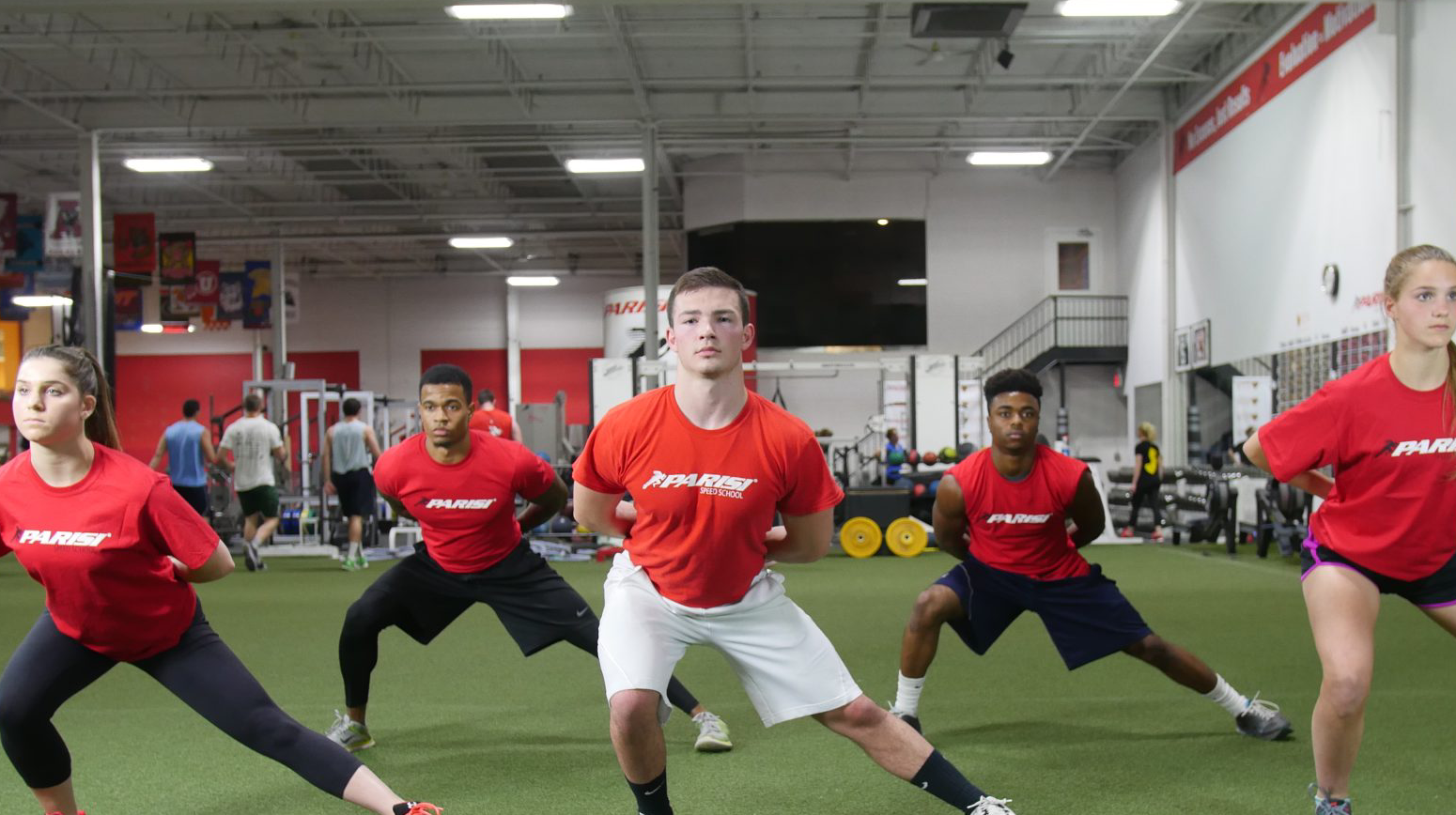In Parisi land, we refer to maximum speed as the athlete’s ability to maintain maximum force production by way of optimal stride length and optimal stride frequency.
I think it’s important we start this week by diving into the non-negotiables of what has to happen in an athlete’s maximum speed phase in order to, well, stay fast!
For us at Parisi, it starts by breaking down the mechanics into frontside and backside.
Frontside meaning any physical and mechanical action happening in front of the body.
Backside meaning any physical and mechanical action happening behind the body – specifically after ground contact.
So what are the non-negotiables?
Vertical force production
As the lower leg releases and starts to initiate the downward strike in to the ground, the entire leg is vertically aligned under the hip. The debate of horizontal vs vertical force production is very real in speed training, however, there is no denying that the foot strikes down when making contact.
Stacked Ribs and Pelvis
By putting these two body parts in alignment, we can minimize energy leaks in the upper body, allow our torso to help fight too much rotation, and the pelvis is *probably* finding a good tilt to facilitate hip lock.
Positive shin angle upon the lower shank ‘fold’
This is a big one. I always would tell our athletes that we want front side mechanics to stay in front and backside mechanics to not being in front. When the foot touches down, and the leg starts to initiate the first ‘fold’, we want that action to start at the midline of the body and get back in to front side. Check out the fold and recovery drill below to see where that action occurs after the foot leaves the ground.
It really boils down to those three concepts.
Could there be more? Sure.
But remember with these non-negotiables, these are the first pillars that have to happen in order for our athletes to achieve their maximum speed.
What’s next?
Looking for a Parisi Speed School near you? Check out our Location Map.
Are you a Coach interested in joining the Parisi Speed School Network? Download our Free Guide.


 LKN Flyers – Success Story
LKN Flyers – Success Story